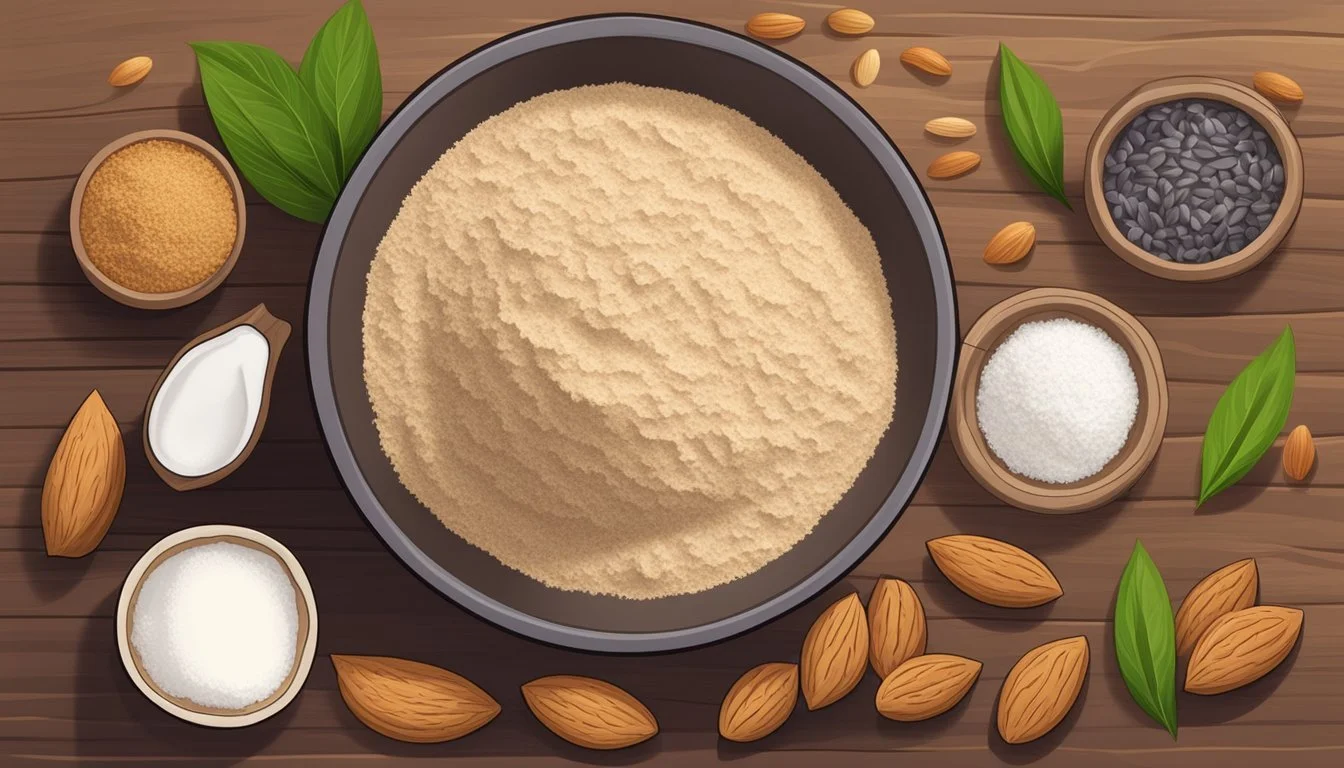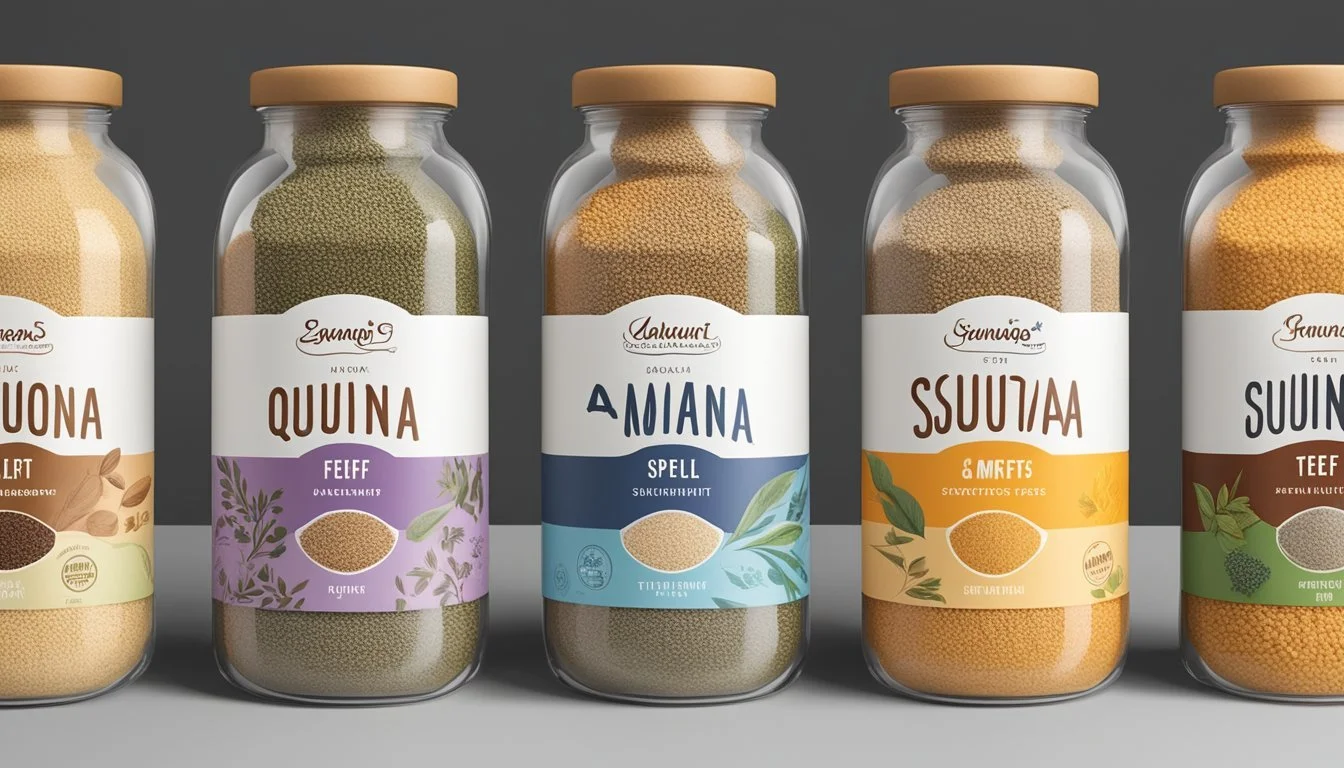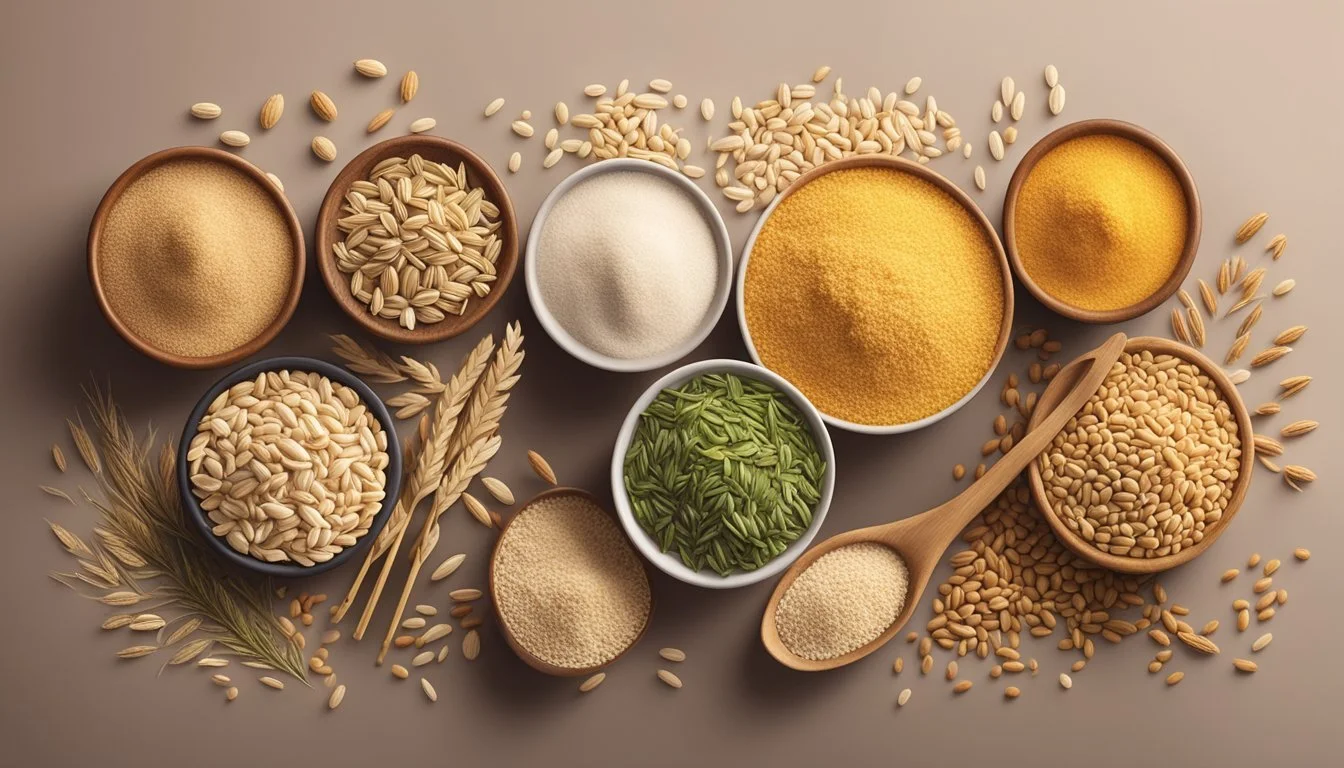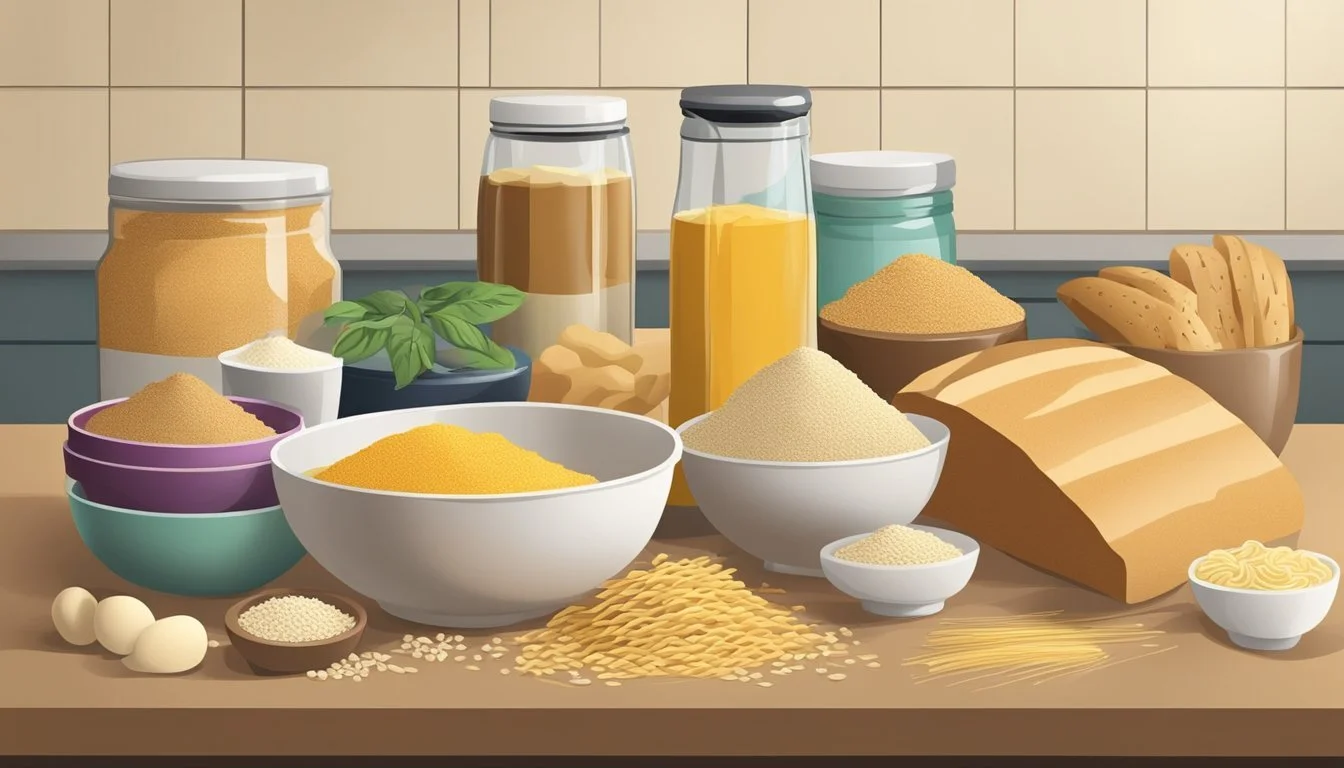Spelt Substitutes
Top Alternatives for Your Baking Needs
Spelt, an ancient grain closely related to wheat, has become increasingly popular due to its nutty flavor and potential health benefits. It is appreciated not only for its taste but also for its impressive nutritional profile, which includes dietary fiber, protein, and essential nutrients. Despite its advantages, some individuals seek alternatives due to dietary restrictions, gluten intolerance, or simply for variety in their cooking and baking routines.
The search for spelt substitutes often leads to a variety of flours that offer similar textures and flavors, as well as compatible nutritional profiles. All-purpose flour, for instance, can typically replace spelt in many recipes, although minor adjustments to liquid ratios may be necessary. Whole wheat flour is another viable option, offering a closer match in terms of both nutrition and density, and it can be used interchangeably with spelt.
For those avoiding gluten, the market presents several alternatives, from einkorn and Kamut flours, known for their rich, nutty flavors, to completely gluten-free options such as amaranth, rice, and oat flours. These substitutes not only cater to gluten sensitivities but also bring their own unique qualities and nutritional benefits to a variety of dishes, allowing for creative and health-conscious cooking.
Understanding Spelt
Spelt, an ancient grain rich in nutrients and versatile in the kitchen, has distinct characteristics that affect how it's used in cooking and baking. Spelt’s unique profile gives it advantages over modern wheat varieties in certain contexts.
Origins and Characteristics
Spelt is an ancient grain that belongs to the wheat family and has been cultivated for centuries. It is known for its tough husk, which protects the grain from pollutants and pests during growth, yet this feature also means spelt requires more processing after harvesting. Spelt offers a slightly nutty flavor and a chewy texture, making it a favored ingredient to enhance the taste and integrity of various foods.
Texture in baking: Produces a chewy and light dough.
Nutritional Profile
Spelt is a nutritional treasure trove, providing a host of essential nutrients. It is particularly high in protein and dietary fiber, which contribute to muscle repair and digestive health. The grain is also a good source of vitamins and minerals, such as iron, magnesium, and zinc, which are necessary for various bodily functions. Spelt's carbohydrate content provides sustained energy, making it a beneficial ingredient for a balanced diet.
Protein: Approximately 10 grams per cup of cooked spelt.
Fiber: Roughly 8 grams per cup.
Nutrients Benefit Iron Oxygen transport, energy creation Magnesium Bone health, muscle function Zinc Immune support, wound healing
Spelt in the Kitchen
In the culinary world, spelt is known for its diversity and ease of use, especially in baking. The grain's gluten content allows for elasticity in bread doughs but is often considered easier to digest than that of modern wheat. Spelt can absorb less liquid than all-purpose flour, so proportions in recipes may need slight adjustments. It's commonly used to create loaves with a full-bodied flavor and satisfying texture, as well as other baked goods like muffins and cookies. Cooking with spelt flour may require using 10-25% less liquid compared to all-purpose flour due to its different absorption qualities.
Uses: Breads, muffins, cookies, pancakes. Reminder: Adjust liquid content when substituting for all-purpose flour.
Health and Dietary Considerations
When considering substituting spelt in a diet, it is essential to understand its gluten content and the benefits of its high fiber makeup.
Gluten Content in Spelt
Spelt contains gluten, making it unsuitable for individuals with celiac disease or gluten sensitivities. As a close relative to wheat, spelt's gluten composition is similar but often considered to be more digestible than traditional wheat gluten. However, for those who must avoid gluten, one must seek gluten-free options carefully. Grains such as quinoa and buckwheat serve as gluten-free alternatives and can provide similar textures and flavors in recipes.
Benefits of High-Fiber Grains
Spelt is well-known for its high dietary fiber content, which is integral for good digestion. Consistent intake of high-fiber grains like spelt can offer health benefits, promoting satiety and potentially aiding in weight management. While spelt is not the only grain to boast a high fiber profile, it is often lauded for contributing to a healthier choice in the diet when compared to refined grains.
Spelt Flour Substitutes
When seeking alternatives to spelt flour, individuals will find an array of substitutes ranging from gluten-free options to ancient grains and other cereals. Each alternative brings its unique texture and nutritional profile to recipes, suitable for a variety of dietary needs.
Gluten-Free Alternatives
For those avoiding gluten, several flours provide good alternatives to spelt flour.
Rice Flour: A common gluten-free substitute with a neutral flavor, making it suitable for a broad range of dishes.
Amaranth Flour: Known for its nutrient density, amaranth flour delivers a mild, nutty flavor and is rich in protein and fiber.
Coconut Flour: Highly absorbent and rich in fiber, coconut flour requires an increased amount of liquid in recipes.
Almond Flour: Offers a subtly sweet flavor and is beneficial for those seeking a gluten-free option that's also high in protein and healthy fats.
Selecting the right gluten-free substitute depends on the desired flavor and texture as well as the specific recipe requirements.
Whole Wheat and Ancient Grains
Those not restricted by gluten may consider whole wheat and ancient grains as spelt flour alternatives.
Whole Wheat Flour: A direct substitute that complements an extensive array of recipes while maintaining a similar baking profile to spelt.
Einkorn Flour: Derived from farro, it imparts a sweet and nutty flavor, closely resembling the taste of spelt flour.
Kamut Flour (Khorasan Wheat): With its rich, buttery flavor, it's suitable for bread and pasta, offering a robust texture.
Emmer Flour: Another ancient grain that's closely related to farro, known for its wholesome and full-bodied taste.
These ancient grains not only mimic the qualities of spelt but also contribute to a diverse nutritional profile in baking.
Other Grain Substitutes
Numerous other grain-based flours can serve as substitutes for various culinary applications.
Barley Flour: With a slightly sweet essence, it's suitable for adding a tender crumb to baked goods.
Oat Flour: It lends a chewy texture and slightly sweet flavor to recipes, though it may necessitate adjustments in liquid content.
Quinoa Flour: Adds complete protein to dishes and imparts a distinct, earthy taste.
Buckwheat Flour: Offers an earthy, rich flavor and pairs well with robust ingredients.
Sorghum Flour: Known for its mild taste, it's a versatile alternative that adapts well to various spelt flour recipes.
Experimenting with these substitutes can offer new dimensions of flavor and nutrition to one's baking repertoire.
Exploring Flavor Profiles
When replacing spelt flour, identifying a substitute that aligns with the desired flavor profile is crucial for maintaining the character of the original recipe. Substitutes vary in terms of their nutty and earthy qualities or sweet and buttery notes.
Nutty and Earthy Substitutes
For those who appreciate the distinct nutty and earthy tones of spelt, einkorn flour is an excellent choice. It retains a similar flavor that is beloved in traditional spelt recipes. Amaranth and quinoa are also commendable substitutes, adding a comparable earthiness to dishes, although they may impart a slightly different texture.
Einkorn Flour: Very similar to spelt, preserving its nuttiness.
Amaranth: Adds an earthy undertone with a nutritious boost.
Quinoa: Delivers a nutty flavor, though it's often found in seed form.
Sweet and Buttery Options
For recipes requiring a lightly sweet taste, almond flour offers a buttery richness and a subtly sweet flavor that can enhance baked goods. If one desires an option that yields a sweet and somewhat exotic taste, coconut flour stands out as highly flavorful, though the texture may vary from that of spelt.
Almond Flour: Contributes a sweet, nutty, and distinctly buttery flavor.
Coconut Flour: Provides a lightly sweet taste with a unique, tropical twist.
Cooking and Baking Applications
When using spelt flour substitutes in cooking and baking applications, it's essential to consider both the flavor and texture that different substitutes may bring to recipes. The right substitute can ensure the desired outcome for various types of baked goods and savory dishes.
Breads and Muffins
For bread and muffins where a hearty texture is preferred, whole wheat flour can serve as a 1:1 substitute for spelt flour, as both have similar nutrition and density profiles. In recipes such as banana bread, where spelt's slightly sweet and nutty flavor is notable, einkorn flour can replace spelt, enriching the loaf with its distinctive taste and richness in nutrients.
Whole Wheat Flour: Ideal for hearty, rustic bread and muffins.
Einkorn Flour: Suitable for sweet bread like banana bread, offering a slightly sweeter, nuttier flavor.
Sweet Baked Goods
Sweet baked goods such as cakes, cookies, and pastries often require a light, delicate crumb which can be achieved with all-purpose flour. When using all-purpose flour to replace spelt in these recipes, one might need to slightly adjust the liquid content.
All-Purpose Flour: Works well for cakes, cookies, and pastries; minor adjustments to liquid content may be necessary.
Savory Dishes
For savory dishes that typically use spelt, such as pasta, sauces, soups, and stews, barley flour can be a very fine substitute, providing a texture suitable for thickening these types of dishes. Additionally, meat that is breaded with spelt flour can be coated in a mixture of rice flour and oat flour for a similar texture.
Barley Flour: Excellent as a thickener in sauces, soups, and stews; a fine substitute in pasta.
Rice Flour and Oat Flour: Good combination for breading meat to achieve a texture close to spelt flour.
In each case, chefs and home cooks should take care to measure substitutes accurately and be mindful of the unique characteristics that different flours bring to their culinary creations.
Textural Considerations for Substitutes
When substituting spelt flour in recipes, one must carefully consider the textural implications on the final product. Different flours can affect the density, moisture, and cohesiveness of baked goods, making it crucial to choose substitutes that best mimic spelt flour's unique properties.
Maintaining Desired Consistency
To maintain the consistency that spelt flour imparts, a baker must select a substitute that has similar absorption characteristics. Spelt flour is known for its slightly nutty flavor and a texture that's less dense than whole wheat but more robust than all-purpose flour. Here are common replacements and their relative consistencies compared to spelt flour:
All-Purpose Flour: It's more refined and less absorbent, which can result in a lighter texture. Bakers may need to reduce liquid in the recipe slightly.
Whole Wheat Flour: This option is denser and has a similar absorbency, making it a direct substitute; however, it can make the final product slightly heavier.
Buckwheat Flour: It offers a rich, earthy flavor but can create a denser and more crumbly texture. Bakers might need to add binders like xanthan gum to achieve a similar structure.
Oat Flour: Known for its fine texture and sweetness, oat flour can make baked goods more moist and chewy. The recipe may require adjustments for added moisture.
When experimenting with these substitutes, it’s essential to start with a 1:1 ratio and adjust the recipe as needed for proper texture.
Adapting Recipes to Alternative Flours
Alternative flours often do not behave exactly like spelt in recipes due to differences in protein content, particle size, and flavor profiles. Several factors should be considered:
Absorbency: Flours like coconut or almond are more absorbent than spelt and can lead to drier outcomes. Adjust liquid content accordingly.
Density: Substitutes such as Kamut are heavier and can make breads and cakes denser. They are suitable for hearty bread but may not be ideal for light and airy cakes.
Structure: Flours lacking gluten can result in a crumbly texture. Use binders like xanthan gum to help emulate spelt's cohesiveness.
By understanding these factors, the cook can expertly adapt recipes to utilize a range of spelt flour substitutes without compromising the integrity of the baked goods.
Using Spelt Substitutes in the Home Kitchen
When incorporating spelt substitutes into home cooking, it's crucial to consider the unique properties and ratios that these alternatives bring to recipes. The versatility of these options enables customizable cooking experiences in the kitchen.
Homemade Bread and Flatbread
In homemade bread and flatbread recipes, a variety of spelt substitutes can be used to alter nutritional profiles and flavors. Einkorn flour, for example, can be an excellent spelt substitute due to its similar nutritional benefits and slightly sweeter taste. To maintain the bread's structure, a 1:1 substitution ratio is typically effective. Another option, buckwheat flour, is gluten-free and imparts a distinctive flavor that complements rustic bread varieties. For those requiring a gluten-free alternative, a combination of buckwheat flour with a glutenous flour might be necessary to achieve the desired texture.
Customizing Recipes with Substitutes
The key to successfully customizing recipes with spelt substitutes lies in understanding the substitute's qualities. For instance:
Amaranth flour: Suitable for pasta and biscuits, it usually requires a binding agent due to its lack of gluten.
Barley flour: This is a fine substitute that works well in both baking and cooking, offering a slightly nutty taste.
When adjusting recipes, it's important to start with equivalent substitutions, such as replacing 1 cup of spelt with 1 cup of the chosen flour, and then tweaking as needed based on the results. Some flours, like quinoa, may need to be mixed with another wheat-based flour at a recommended proportion of up to 50% to maintain the structure of the recipe.






